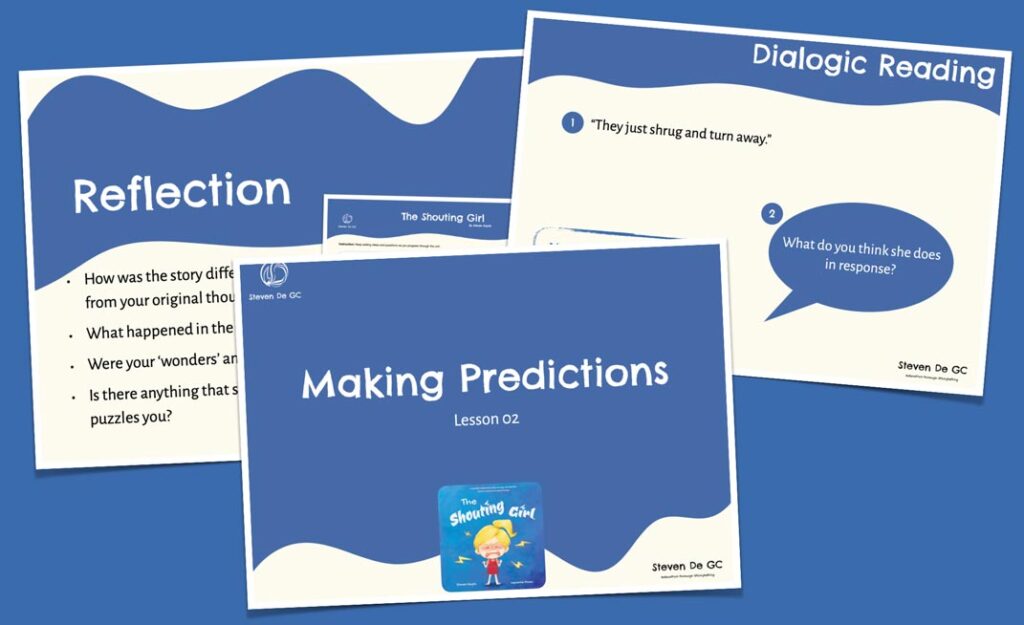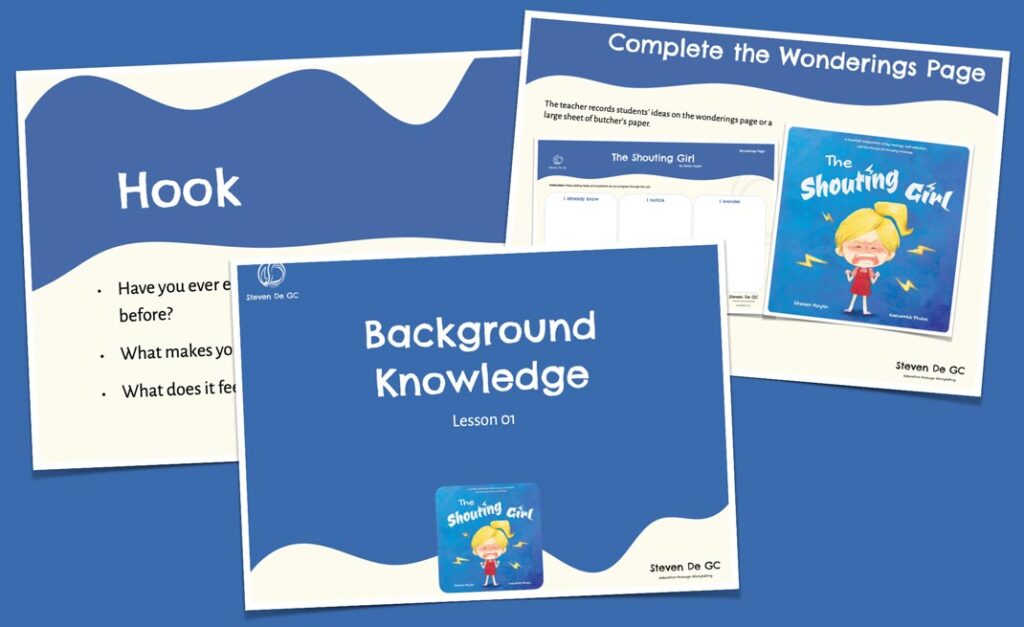- Complete a Personal Recount writing sheet.
- Encourage students to write on the line with proper punctuation.
[T4R] Stay For Dinner: L10 Evaluation

The Book
Stay For Dinner
Written by Sandhya Parappukkaran, illustrated by Michelle Pereira, published by Bright Light
Stay for Dinner by Sandhya Parappukkaran is a vibrant celebration of cultural diversity and the connections made through shared meals. The story centres on a family preparing a special dinner for their child’s friends, offering a glimpse into various mealtime customs and table manners (AC9HP2P01 – Years 1 and 2, Health and Physical Education). Through the lens of this dinner, the book explores the emotional responses and questions that arise from cultural traditions (AC9HP2P03 – Years 1 and 2, Health and Physical Education), encouraging children to embrace diversity and appreciate the richness of different cultural backgrounds (AC9HP2P02 – Years 1 and 2, Health and Physical Education).
The narrative is brought to life with vivid sound and imagery words such as “squish,” “splash,” “slice,” and “prong,” capturing the sensory experience of the meal. Culinary terms like “papadum,” “sadhya,” and “dumpling” add authenticity and depth, inviting readers into the world of diverse cuisines. As the main character reflects on her and her friends’ mealtime experiences, the story underscores the importance of understanding and respecting different customs, fostering a sense of togetherness and mutual respect.
With its rich illustrations and heartwarming themes, Stay for Dinner inspires children to find joy in sharing meals and traditions, highlighting the value of friendship and cultural appreciation.
Resource creator
Steven Huynh
Subject
Level
Description
This is Lesson 10, the last lesson, of the Talk For Reading (T4R) unit of Stay For Dinner.
This lesson assesses students’ understanding of the text and their cultural awareness through an independently written, guided recount.
Learning Intentions
• We are learning to reflect on the text.
Successful Criteria
• I can write a recount about my experience being invited to a meal from a culture that is different from my own (AC9E2LY06).
Curriculum Alignment
AC9E2LY06 9.0 (English Language and Literacy Year 2): Create and edit short imaginative, informative and persuasive written and/or multimodal texts for familiar audiences, using text structure appropriate to purpose, simple and compound sentences, noun groups and verb groups, topic-specific…
• creating written texts so that readers follow the sequence of ideas or events
• using vocabulary, including topic-specific vocabulary, appropriate to the purpose
• using digital tools to create texts
• using simple and compound sentences correctly and flexibly to express and combine ideas
• editing by adding, deleting or changing vocabulary to improve a text; for example, replacing an everyday noun with a topic-specific one
• reviewing sentences for grammatical accuracy; for example, use of pronouns
Materials
- The book Stay For Dinner
- Personal Recount writing sheet
Instructions
Downloads




![[T4R] Stay For Dinner Reading Unit for Year 2 [T4R] Stay For Dinner Reading Unit for Year 2](https://stevendegc.com.au/wp-content/uploads/2025/02/T4R-Stay-For-Dinner-UnitOverviewCover-1024x627.jpg)


![[T4R] Let’s Build a Boat: L11 Evaluation and Reflection [T4R] Let’s Build a Boat: L11 Evaluation and Reflection](https://stevendegc.com.au/wp-content/uploads/2025/05/LetsBuildaBoat-T4R-Lesson11-Cover-1024x626.jpg)
![[T4R] Let’s Build a Boat: L10 Summarising [T4R] Let’s Build a Boat: L10 Summarising](https://stevendegc.com.au/wp-content/uploads/2025/05/LetsBuildaBoat-T4R-Lesson10-Cover-1024x626.jpg)
![[T4R] Let’s Build a Boat: L9 Making Inferences [T4R] Let’s Build a Boat: L9 Making Inferences](https://stevendegc.com.au/wp-content/uploads/2025/05/LetsBuildaBoat-T4R-Lesson9-Cover-1024x625.jpg)
![[T4R] Let’s Build a Boat: L6 Writing a Boat-making Procedure [T4R] Let’s Build a Boat: L6 Writing a Boat-making Procedure](https://stevendegc.com.au/wp-content/uploads/2025/05/LetsBuildaBoat-T4R-Lesson6-Cover-1024x626.jpg)
![[T4R] Let’s Build a Boat: L5 Connecting to a Different Text [T4R] Let’s Build a Boat: L5 Connecting to a Different Text](https://stevendegc.com.au/wp-content/uploads/2025/05/LetsBuildaBoat-T4R-Lesson5-Cover-1024x626.jpg)
![[T4R] Let’s Build a Boat: L4 Literal Retrieval [T4R] Let’s Build a Boat: L4 Literal Retrieval](https://stevendegc.com.au/wp-content/uploads/2025/05/LetsBuildaBoat-T4R-Lesson4-Cover-1024x626.jpg)
![[T4R] Let’s Build a Boat: L3 Making Connections [T4R] Let’s Build a Boat: L3 Making Connections](https://stevendegc.com.au/wp-content/uploads/2025/05/LetsBuildaBoat-T4R-Lesson3-Cover-1024x625.jpg)
![[T4R] Let’s Build a Boat: L2 Making Predictions [T4R] Let’s Build a Boat: L2 Making Predictions](https://stevendegc.com.au/wp-content/uploads/2025/05/LetsBuildaBoat-T4R-L2-Cover-1024x627.jpg)
Leave a Reply